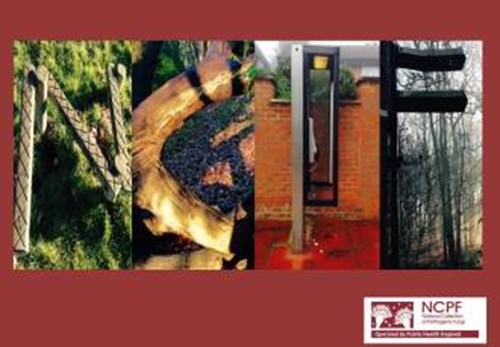Breaking the mould (and the yeasts) in biomedical research – NCPF in 2017

Candida and Aspergillus are the most prevalent fungal infections in hospitals but other species cannot be neglected. A research group in Spain have described a PCR-assay to help obtain a more rapid and accurate identification of Saprochaete capitata, an emerging cause of invasive fungal infections in patients with haematological malignancies1. Seven NCPF strains were included as controls including NCPF 7367, Aspergillus fumigatus.
Other publications that we reviewed citing the use of NCPF in research in 2017 included one by a team in Thailand recognising the need for new compounds to combat AMR in yeasts. They investigated the antivirulence and immunostimulatory properties of an extract from the leaves of a native flowering plant, Rhodomyrtus tomentosa, looking for activity against Candida albicans, and using NCPF 3153 as one of the control strains2.
Candida auris, a multidrug resistant pathogen and cause of healthcare associated infections, continued to attract considerable attention in the mycology research community during 2017. This organism is able to survive on surfaces and withstand environmental stresses, creating a challenge for eradicating it from hospitals. A group in Scotland evaluated a panel of clinical isolates of C.auris on different surface environments against sodium hypochlorite, a standard disinfectant, and peracetic acid, a high-level disinfectant. Four authenticated NCPF control strains of C.auris were included in this study3.
Scientists in the PHE Mycology Reference Laboratory also contributed to our knowledge of C.auris in 2017, not only participating in a study to investigate the biofilm-forming capability of the organism4 but also publishing a comparison of the rDNA sequences of 24 isolates of C.auris from different hospitals in the UK. They demonstrated that UK isolates fall into three well-supported clades that correspond to lineages reported previously from India, Malaysia and Kuwait, and South Africa respectively. This publication lists 23 strains of C.auris available from NCPF5.
Related Links
References
- Arrieta-Aguirre I, Menéndez-Manjón P, Cuétara MS, Lopez-Soria L, García-Ruiz JC, Moragues MD. Molecular identification of Saprochaete capitata in human blood and paraffinized tissue samples. Journal of clinical microbiology. 2017.
- Hmoteh J, Musthafa KS, Voravuthikunchai SP. Effects of Rhodomyrtus tomentosa extract on virulence factors of Candida albicans and human neutrophil function. Archives of Oral Biology. 2018;87:35-42.
- Kean R, Sherry L, Townsend E, McKloud E, Short B, Akinbobola A, et al. Surface disinfection challenges for Candida auris: an in-vitro study. The Journal of hospital infection. 2017.
- Sherry L, Ramage G, Kean R, Borman A, Johnson EM, Richardson MD, et al. Biofilm-Forming Capability of Highly Virulent, Multidrug-Resistant Candida auris. Emerg Infect Dis. 2017;23(2):328-31.
- Borman AM, Szekely A, Johnson EM. Isolates of the emerging pathogen Candida auris present in the UK have several geographic origins. Medical Mycology. 2017;55(5):563-7.
